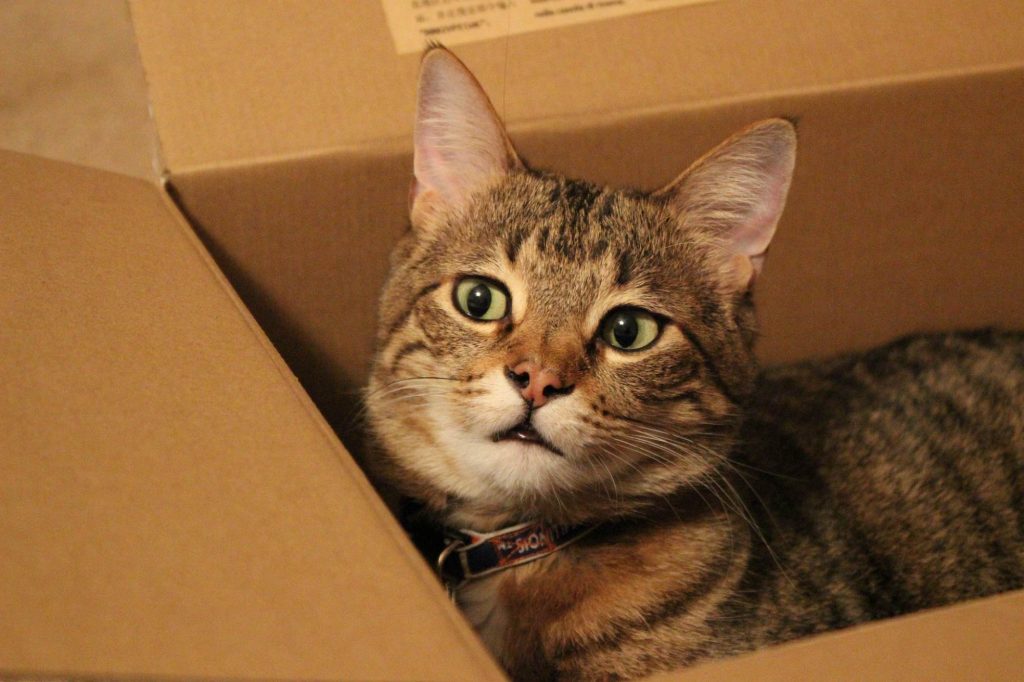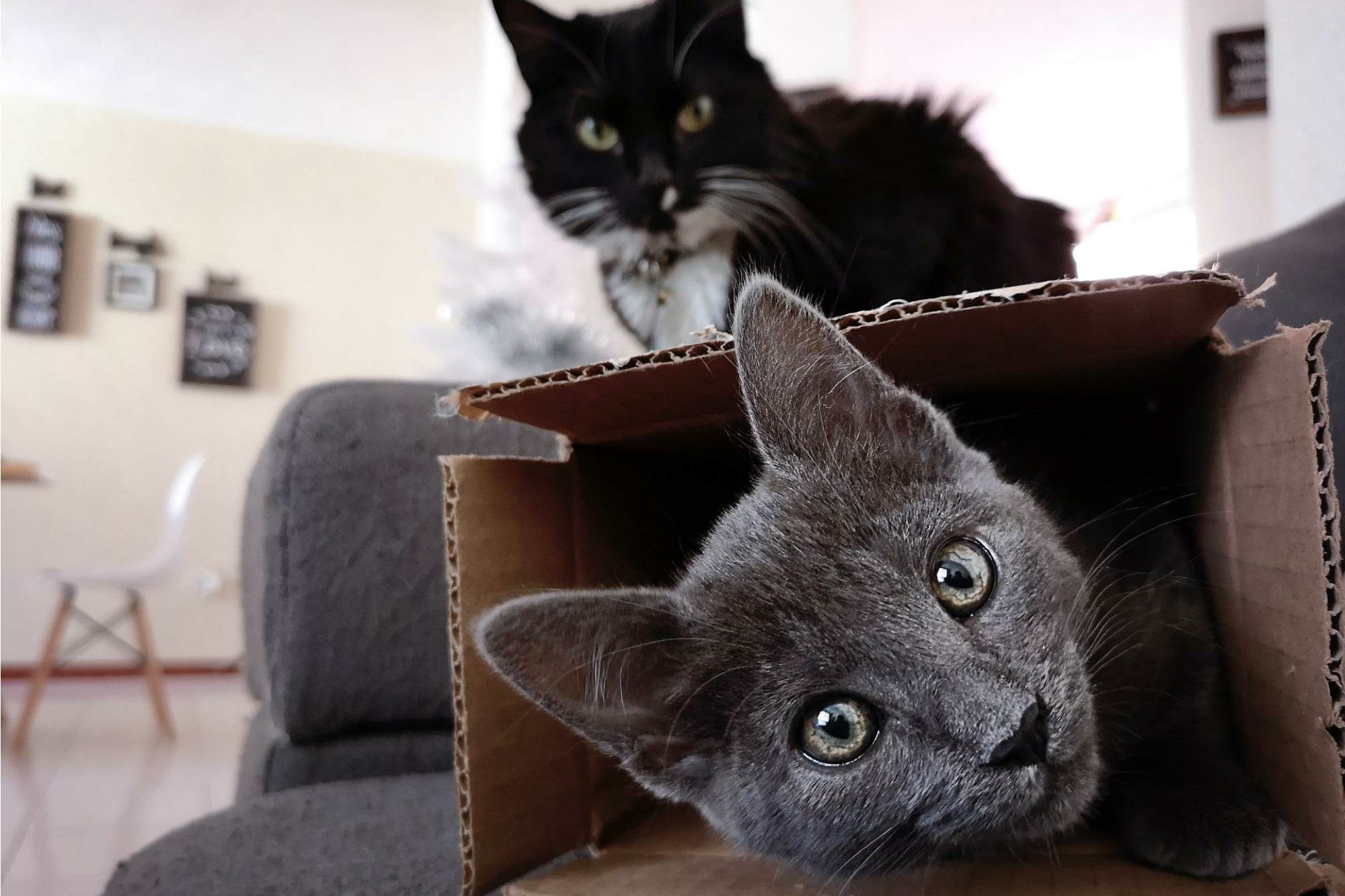Are you in the middle of relocating and moving house with a cat to consider?
As human beings, everyone knows just how stressful moving can be however, it is all too easy to forget the impact it has on our beloved pets.
Moving house with a cat can pose some challenges if it’s not planned properly.
It needs to be handled with care and sensitivity, taking into account your cat’s feelings.
Cats typically have a strong connection with their homes.
They can feel stressed and vulnerable if taken somewhere unfamiliar.
Taking away the routine of their day can considerably affect their well-being.
In most cases, you won’t be able to eradicate absolutely all the stress from the move.
However, there are things you can do to make moving house with a cat just a little easier.
Here are a few ideas you might like to implement.
Pre-moving Day Preparations
Cats are clever little creatures.
They know when something different is happening and change is coming.
To avoid them having to take in too many changes all at once, it is a good idea to move where they sleep and where they eat several weeks before the move day.
Place their food bowls, favourite scratching post, toys, and bed in an area that will suffer the least disruption in the build-up to the move.
A good tip is to also put the cat carry basket nearby as well.
Many cats hate their baskets and trying to get them inside at the last minute can be a frightening experience for them.
If they are familiar with it a few weeks beforehand they are not so likely to be afraid.
You can pop a towel or blanket inside; they may even get into it to sleep eventually.
Another trick is the use of pheromone sprays or plugins. Your local pet store will stock them.
Simply put, pheromones release smells into the atmosphere which helps to make your cat feel calm and safe.
You can spritz the cat carry basket with some of the pheromone spray, and place a few tasty treats in it to tempt them inside.

Moving Day
This is going to be the most disturbing day for your cat.
Everyone will be busy, it will be noisy, there will be strangers in the house (if you are using a professional removal company), and all the familiar items of furniture will be moved and packed.
It might be a good plan to book your cat into a cattery for a few days on either side of the move.
This will give you the opportunity to get everything done with minimum upheaval for the kitty and to alleviate the worry that he or she may escape and be in unfamiliar territory.
By the time you have completed the transfer from the old to the new house, you can work on introducing your cat to its new environment.
Transporting your Cat
As frightening as it may be to your cat, you may have no choice but take it with you in the car.
Unlike dogs, the vast majority of cats hate being put into the car.
They often associate it with a trip to the vet.
It will take a little preparation to ensure you arrive with the minimum of fuss and stress.
Your carrier will need to be strong, and well ventilated and if your animal is particularly timid, place a light sheet over the carrier to limit the cat’s vision, it will help to keep them calmer.
Be sure to place a plastic sheet under the carrier, just in case of accidents.
Make the carrier as comfy as you can.
Line it will several layers of newspaper and cover the inside with a soft blanket.
You may be tempted to take your cat out of the box during the journey to comfort it however, this is to be avoided.
Frightened animals are unpredictable, and it would be dangerous to have a cat roaming around in the car.
Double check the front of the carrier is locked and secure it using the back seatbelt or with whatever you can to avoid too much movement.
You want it to be as stable as possible throughout the trip.
Ensure that there is plenty of fresh air flowing over the carrier.
Talk to your cat if he/she is meowing or crying, do not open the box to smooth them as they could escape. Talk quietly and calmly to them.
If you have to stop along the way, the vehicle should be left in the shade and a window slightly open. Better still take it in shifts to sit with your cat and leave the air conditioner on.
Pack a Cat Travel Bag
If you are only moving a couple of miles down the road, your trip will only be a short one.
For longer distances packing a handy travel bag will ensure you have everything you need close at hand.
Remember to pack some cat food, a couple of bottles of water, a litterbox and litter, and several bowls.
A roll of kitchen roll is ideal for mopping up spillages or accidents.

Settling into the New House
Upon your arrival, the next step is to familiarise your cat with its new environment.
This may take a few weeks, so you need to be patient.
The first thing to do is to double-check the new house is cat-proof.
Close all windows and doors and tuck away any electrical cords or plugs where your cat might get stuck.
Choose one of the rooms as the designated cat room for a few days. Putting a few items around the cat carrier that will have the familiar scent on them from the old house will help.
Place their water and food bowls close to the carrier.
With the room door closed, you can let your cat out to explore.
Set aside some time on a regular basis over the next few days to sit with them in the room and make them feel secure.
Bit by bit you can allow them to take their time and start to roam freely around the house.
They can then familiarise themselves with their new surroundings, sights, and smells.
How Long do I need to keep my Cat Inside
How long you need to keep them inside will vary from pet to pet.
However, vets normally agree that 2-4 weeks is a good period when moving house with a cat.
You can start to familiarise your cat with the outside of the property little by little.
Start with just a few minutes per day and work up. Keep the door open so that they can run inside if they want to.
Bit by bit it will venture further from the house until it is comfortable enough to go out alone.
Once they remember the scent profile of your new house, cats are capable of successfully finding their way back.
Safety First
It is very easy for a cat to escape during the first few days in the new house.
You will be in and out, up and down the stairs busy settling in.
You may have smaller children who won’t understand that keeping the cat inside is important.
It is all too easy for a door or window to be left open and for kitty to take the opportunity to get outside.
Therefore, before you move, make sure your cat’s ID collar or tag is secure and up to date, with the new address and telephone number clearly marked.
Better still, microchip your cat before the move.
If cats are scared their first reaction is to run.
They won’t be used to the new smells and location.
Reunions are so much more likely with animals who have been microchipped.

Register With the Local Vet
Once you have had a chance to settle into your new home, you will need to register your cat with the local veterinary practice.
If you need to change to a new practice, you should do this in plenty of time before your move so that your new vet has all of your cat’s medical records.
Most locations will have a local surgery nearby.
You can pop in and visit and you can even register online at some surgeries.
Look for a vet who is registered with the Royal College of Veterinary Surgeons (RCVS).
That way you can be sure you will get the best service.
Visit the RCVS website to find a practice near you.
A Happy Transition
These are just some of the ways you can make moving house with a cat a little less frantic for both your animal and you!
The less stress your cat is under the quicker it will settle.
In no time at all your cat will be off on its own exploring the neighbourhood.
You will be safe in the knowledge that you have done all you can to ensure it feels happy, secure, and accustomed to its new home.




